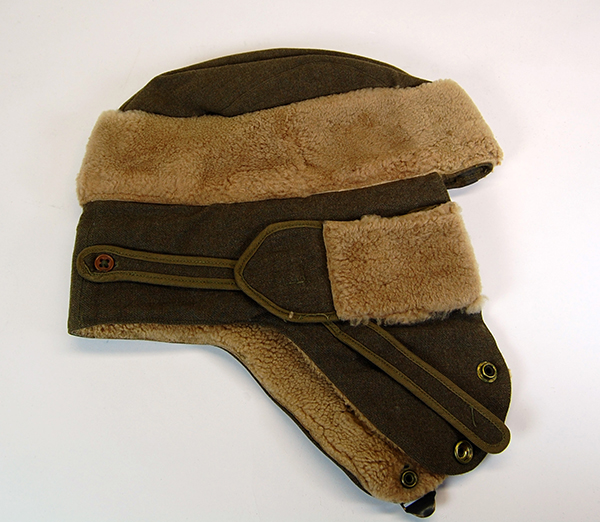As we enter another month of winter, here are some cold-weather-related items from the Nebraska History Museum collections, legacies of winters past:
This pair of steel ice skates was manufactured in Beatrice by F. D. Kees Manufacturing Company. The company also made roller skates, building hardware, cornhuskers (the hand tool), and garden tools. Frederick Daniel Kees owned a hardware store and gun shop in Beatrice; in 1874 he began making husking hooks and pegs, soon expanding to other products. The company’s line of ice skates and roller skates was sold to a Chicago company in 1933. NSHS 10873
“A little schoolhouse stood alone / Upon the prairie bare / And thirteen little children came / One winter morning fair. . . .” The blizzard of January 12, 1888, was the deadliest winter storm in Great Plains history. It was called the Schoolhouse Blizzard because it came suddenly during a spell of warm weather, catching people away from home, and trapping rural students in their isolated schoolhouses. Numerous teachers—mostly young women—led their students to safety. Of these, the most celebrated was Minnie Freeman, subject of this song published by a Chicago sheet music company. HN 8731-50
This 1937 Persian lamb’s wool coat was the height of 1930s fashion and was a treasured possession of Hedwig Rosenberg of Frankfurt, Germany. Although some of the Rosenberg’s relatives escaped Nazi Germany and settled in Nebraska, Hedwig and her husband, Benno, did not make it out. On September 2, 1942, Hedwig took this coat and several other items to a non-Jewish neighbor for safekeeping. The Rosenbergs were soon arrested and were murdered at the Treblinka extermination camp in Poland on September 29. The neighbor, who had buried the coat in her backyard, mailed it to Nebraska after the war. Read more of the coat’s tragic story here. HN 11588-263
Families often save wedding dresses or military uniforms, but usually, don’t preserve everyday work clothes. This winter-weight work jacket was worn by Henry Hottendorf of Falls City in the early 1970s. The back collar reads, “Big Mac/Union Made/Penneys.” HN 11640-478
Wartime demands led to fuel rationing during World War II, and this U.S. Government Printing Office poster encourages citizens to economize and to order their winter’s supply of fuel oil or coal early. HN 4541-738
Cold-weather military cap used at Fort Robinson by 1st Lt. Robert H. McCaffree during World War II. The fort housed a prisoner-of-war camp and a war dog training facility. HN RG11475-1
And there’s lots more. You can search our collections here to find other fascinating pieces of Nebraska history.









